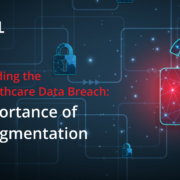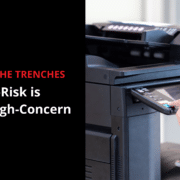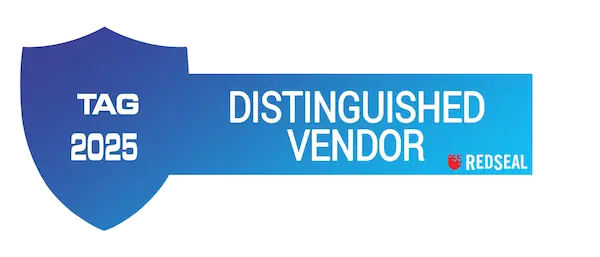Embracing Continuous Threat Exposure Management (CTEM)
With new vulnerabilities emerging daily and cyber threats becoming more sophisticated, organizations must evolve their cybersecurity strategies to protect their digital assets. One such strategy endorsed by a leading industry analyst firm is gaining traction with forward-thinking CISOs: Continuous Threat Exposure Management (CTEM). In this blog, we’ll explore the basics of CTEM, its benefits, and how it fits into modern cybersecurity strategies.
What is Continuous Threat Exposure Management (CTEM)?
Continuous Threat Exposure Management (CTEM) is a comprehensive framework or process designed to provide ongoing visibility and management of cybersecurity threats and vulnerabilities, putting greater priority on those that have greater business impact. No network will ever be perfect, and you can’t prevent or fix every single issue. CTEM emphasizes practical scoping, proactive threat discovery, continuous risk assessment and validation, and cross-team collaboration—to reduce both existing and future exposures.
It’s important to note that with CTEM, “threat exposure” is not limited to vulnerabilities or external threats. An exposure is anything that puts an organization’s assets at risk. It could be an outdated password or firewall rule, a misconfigured router or gateway, an unknown device, a known vulnerability, or an unintended connection. It could be in on-premises, private cloud, public cloud, OT, or IoT environments. The sheer type and volume of exposures in today’s complex, hybrid networks are too many for overwhelmed teams to manage.
A Fundamental Shift in Cybersecurity
Traditional cybersecurity strategies focus on event-based vulnerability management and periodic assessments. However, this type of episodic, reactive approach can leave significant gaps in protection, as threats evolve faster than many organizations can respond.
CTEM represents a fundamental shift away from managing vulnerabilities based solely on severity or Common Vulnerability Scoring System (CVSS) scores. Instead of simply identifying and patching vulnerabilities, it takes into consideration the entire context of the exposure, including its exploitability, blast radius, and verified business impact to prioritize remediation efforts within the context of the business. As the term implies, Continuous Threat Exposure Management is a more continuous, holistic approach that encompasses dynamic threat assessment and response.
The Five Stages of CTEM
Continuous Threat Exposure Management is a structured approach with five key stages, each critical to managing and mitigating cybersecurity threats effectively.
Stage 1 – Scoping (of business risks and relevant attack surfaces): This stage involves identifying the mission-critical priorities for the business, understanding the systems and processes involved, and determining risk owners and appetites. Scopes don’t limit the CTEM program’s reach but rather provide a means of organizing, reporting, and communicating exposure management work and results to senior leadership and business teams. Understanding the organization’s full attack surface, as well as that of individual scopes, helps put the broader concept of threat exposure management into meaningful business context.
Stage 2 – Discovery (of all assets and threat exposures): This stage involves identifying all assets and connectivity (hidden and visible) and continuously assessing them for vulnerabilities and other exposures (known, unknown, and emerging). Running discovery against scopes outlined in the previous stage helps increase awareness of risks among relevant business teams and makes exposure management successes more impactful in later stages.
Stage 3 – Prioritization (of exposure management work): In this stage, threat exposures of all types are prioritized, considering internal, external, business, and technical factors. Prioritization must go beyond CVSS scores and severity to include concepts of visibility, exploitability, asset criticality, and potential impact. Again, prioritization within and across defined scopes helps teams focus on high-business-value issues.
Stage 4 – Validation (of exposure—and exposure management—viability/impact): In this stage, thinking like an attacker and verifying suggested remediation are key. Validating the exploitability of an exposure through virtual pentesting, red teaming, and attack path analysis—including the blast radius and further lateral movement—helps refine prioritization. Validating that proposed changes are feasible and won’t conflict with existing policies helps build the business case for remediation and collaboration.
Stage 5 – Mobilization (of teams and stakeholders): While automated remediation makes sense for certain types of black-and-white issues, there is a lot of gray area in which stakeholders across teams must make decisions about how to address an exposure, whether that exposure is fixable or not. In this stage, communication and collaboration are key to documenting and operationalizing exposure management work for the (present and future) benefit of the entire organization.
How RedSeal Supports the CTEM Process
While the CTEM term might be relatively new or unfamiliar, the framework’s core principles have been at the heart of RedSeal’s approach for two decades. Since 2004, RedSeal has been pioneering network exposure management to close gaps in cybersecurity defenses on premises and in the cloud. Our hybrid network modeling technology is key to helping our customers know their networks better than their adversaries do.
RedSeal integrates with hundreds of networking and security tools to simplify and accelerate the CTEM process, delivering a unique combination of capabilities from a single platform:
- Scoping: RedSeal models the entire connected network across public cloud, private cloud, and on-prem environments; then, it maps resources into physical/logical/custom topology groups to help organizations understand and organize their attack surface. This visualization helps stakeholders easily identify business-critical systems and assets and define scopes within their business context.
- Discovery: RedSeal continuously identifies all assets and exposures, including those due to hidden assets, misconfigurations, unintended connections (direct and indirect), firewall rules, and policy violations, as well as known and unknown vulnerabilities. It also runs automated attack path analysis and compliance checks against external regulations/standards, internal policies, and best practices to keep exposure assessments current.
- Prioritization: RedSeal considers a range of internal, external, business, and technical factors to assess risk and prioritize all exposures. Risk scores are calculated based on security controls, asset criticality, and vulnerability data—combined with unmatched network context, which includes the visibility, exploitability, exploitation potential, and potential impact of the exposure. Exposures with greater business impact take higher priority.
- Validation: RedSeal runs virtual penetration tests to confirm the viability of exposure exploitation, analyze lateral movement (blast radius), and measure the impact of exposures. It validates vulnerability scans and security controls such as network segmentation and device configurations. Simulating what-if scenarios, the platform minimizes unforeseen complications when making changes to live environments.
- Mobilization: Unlike any other platform on the market, RedSeal serves as the single source of truth for teams collaborating on CTEM. It delivers detailed remediation guidance, including an asset’s precise logical and physical location as well as access paths for containing unpatchable exposures. It also sends alerts directly to stakeholders when policy violations are detected and provides an executive-level dashboard and score to measure the CTEM program over time.
Overall, the RedSeal network exposure management platform embodies the proactive, continuous cybersecurity model that CTEM advocates—and includes a comprehensive set of technical capabilities to accelerate the process.
Accelerate CTEM with RedSeal
Ultimately, Continuous Threat Exposure Management is about proactively mitigating threats and reducing risk. CTEM is not a standalone solution or any single tool but rather a comprehensive, coordinated process to enhance an organization’s overall protection and security posture. With the right level of visibility and collaboration among teams, a CTEM strategy can also inform and support more reactive and longer-term initiatives, such as incident response and digital resilience programs.
By leveraging the capabilities of the RedSeal platform, organizations can significantly enhance their CTEM process, ensuring they stay ahead of cyber threats, mitigate risks efficiently, and safeguard their digital assets in an increasingly complex cyber environment. Contact us for a demo today.
Updated Monday, August 26, 2024




